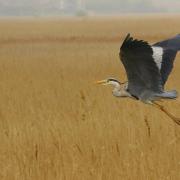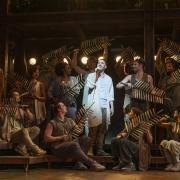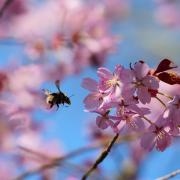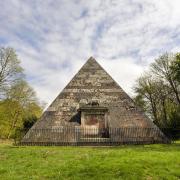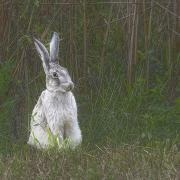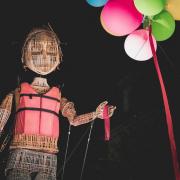How Norwich astronomer Mark Thompson is helping families discover the wonders of the night sky

Families across the country have been exploring the wonders of the night sky with Mark Thompson’s #FamilyStargazeWithMark - although he admitted that his own children opted out!
Mark, who lives near Harleston in south Norfolk and is well known for his appearances on television programmes including Stargazing Live, The One Show and BBC Breakfast, has been leading families around the night sky via a series of tweets from his garden most clear evenings.
“I have two children; Phoebe 10 and Riley 8, and while home-schooling them during the lockdown I tried to come up with ways to help other parents who are home-schooling and very probably pulling their hair out trying to keep their kids interested,” said Mark. “That’s when I came up with the idea of a virtual guided tour around the sky. During the events, that last about 30 minutes (kids lose attention very quickly), I post tweets out to guide people around the sky whilst they are out in their own back gardens.”
Families across Britain join the 46-year-old science broadcaster to find out more about the night sky but Mark said: “Rather amusingly my kids are not interested so they have not been a lot of help!”

In his latest book, 101 Facts You Didn’t Know About Space, Mark shares some of his own awe at the discoveries he has been making since he first fell in love with astronomy as a 10-year-old growing up in Norwich. The former Thorpe St Andrew School pupil saw the rings and moons of Saturn through a telescope at the Norwich Astronomical Society observatory and was hooked.
He went on to share his enthusiasm and expertise with millions of people via television shows including Stargazing Live, The One Show, BBC Breakfast and Good Morning Britain and is a regular voice on Radio Five Live. He has also performed his show ‘Spectacular Science’ at theatres across the country and is now president of the Norwich Astronomical Society where his passion for the stars was first sparked.
“My favourite fact in the book is that dung beetles use the Milky Way to navigate,” said Mark. “Without giving it all away, a great experiment was done where they put some dung beetles in a planetarium and switched off elements of the sky with surprising results!”
And did you know that a compost heap generates as much energy as the sun or that astronauts have feet as soft as babies?
101 Facts You Didn’t Know About Space includes mind-boggling information about planets, black holes and galaxies and is aimed at everyone from astronomy newcomers to enthusiasts, keen to find out more about their universe.
Mark is also in training to break the world record for the longest lecture. He will be raising money for children’s charity Barnardo’s as he attempts to speak for more than 140 hours, beginning at 11am on September 12 at the University of East Anglia. He will need to talk for more than five days and plans to cover everything from the history of astronomy to alien worlds and the earth and moon to the outer solar system.
The build-up began at the Norwich Science Festival last October when Mark gave a talk called ‘Introduction to the Universe – Sleep Not Essential’ after 58 hours without sleep.
101 Facts You Didn’t Know About Space by Mark Thompson is published by Pen and Sword Books.
What to look out for in July’s night sky
Look up this month and on a clear night you might see the Milky Way or some shimmering noctilucent clouds.
The Norwich Astronomical Society is based at Seething Observatory in Thwaite St Mary, near Loddon and members range from beginners to established astronomers. This month it won’t get properly dark until around 11pm, and there are just four hours until the dawn light begins to seep in from the east.
However, it’s worth staying up to see the Milky Way and Debbie Forrester, of the society, said: “In July we may see some shimmering noctilucent clouds before it gets dark. As it gets darker then the marvellous Milky Way comes out to play along with ‘The Summer Triangle’ which consists of three bright stars, Deneb, Vega and Altair.
This is an asterism, not a constellation. Altair is in the constellation Aquila (eagle), Deneb is in the constellation Cygnus (swan) and Vega is in the constellation Lyra (harp). The moon is always a delight and on July 6 we will see a big gibbous moon. So look up and fingers crossed for clear skies.”
You may also be able to see the International Space Station as it makes its way across the night sky and of course the famous Perseid meteor shower is visible from the middle of the month.





